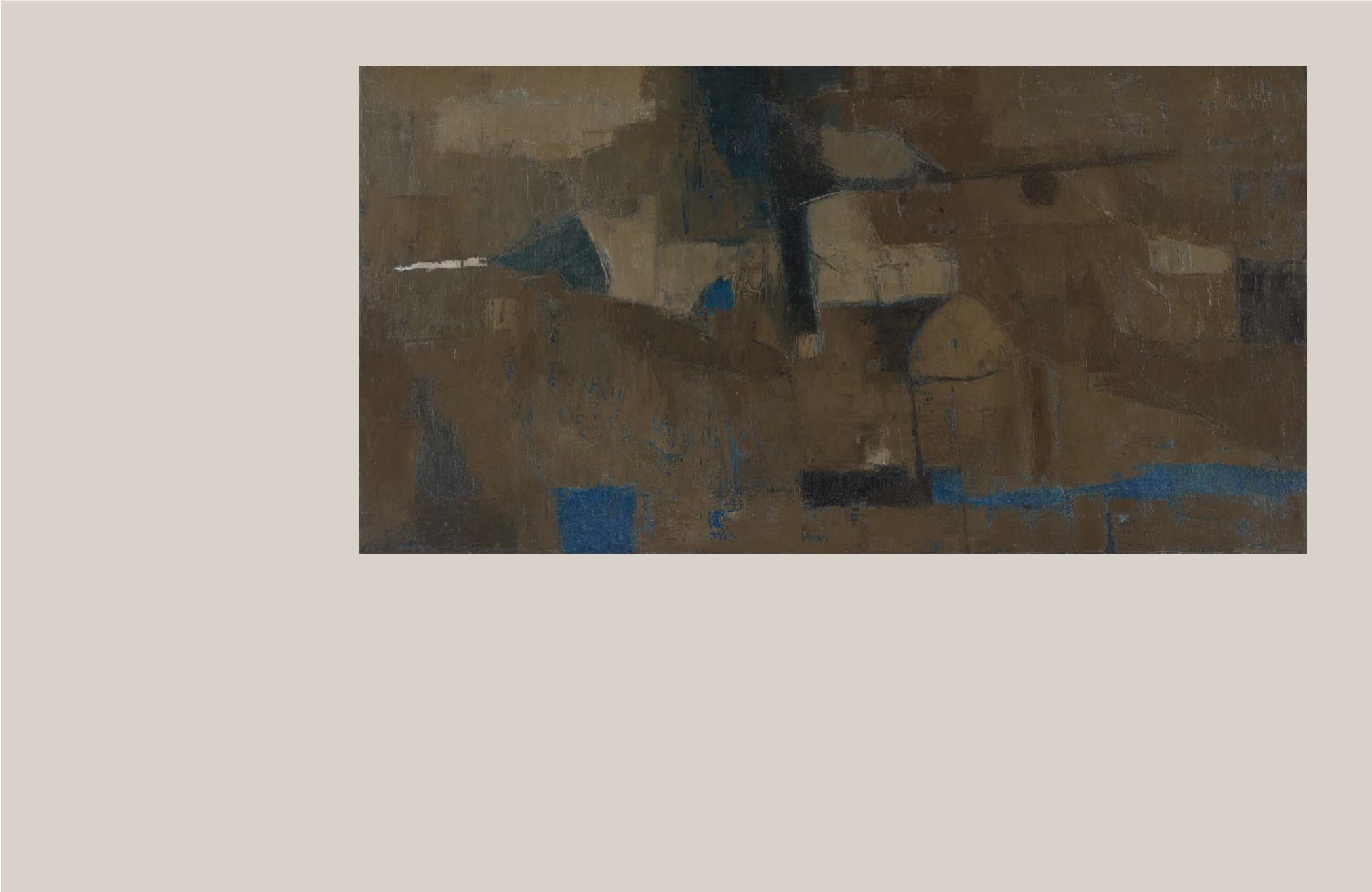

“Benares is important for me both as an artist and as a human
being, the first paintings came at a point when I wanted to develop
elements in figurative painting and go beyond it, my first visit to the
city invoked an emotional reaction as it had peculiar associations.
But such romantic ideas were dispelled when I came face to face
with reality. There was so much pain and sorrow of humanity. As an
artist it became a challenge to portray this agony and suffering, its
intensity required the use of symbolic motifs, so my Benares is of a
representative sort.”
RAM KUMAR
Ram Kumar went through several phases during his
career, on his journey from the figurative to the abstract.
From playing an important role in the drama of his
paintings in the 1950s, the figure was to be completely
eliminated from his works in the following decade, when
he turned to landscapes which were to become bearers
of the emotive in his art. In 1960, a trip to Varanasi, the
city of death and rebirth, supplied Kumar with a new
exposure to human suffering that lay at the intersection
of faith and torment. With this new turn, he sought to
liberate reality from its human context. His early Benares
works negotiate the built cityscape and the landscape
with the occasional, but increasingly abstract depictions
of built forms and the river. “Yet the greyish mist that
enveloped the temple city apparently snaked its way
into the landscape as well. It was as if the artist could not
yet throw off its oppressive weight. The process had to
be gradual. He would also continue to toggle between
expressionism and abstraction, just as he would oscillate
between the city and the landscape.”(Meera Menezes,
Ram Kumar: Traversing the Landscapes of the Mind
,
Mumbai: Saffronart, 2016, p.12)
The present lot, painted in 1961, is one of Kumar’s earliest
Benaras paintings, a subject which has become a defining
theme in his oeuvre. Domes, spires and homes are still
visible in the predominantly brown composition with
the occasional patch of blue river. Richard Bartholomew
says of this period, “The years from 1960‒64 comprised
a predominantly grey period, the sternest and the most
austere in his career. Using the encaustic process Ram
even delved into shades of black. Greys derived from
8
RAM KUMAR
(b. 1924)
Untitled
Signed and dated 'Ram Kumar 1961' (on the reverse)
1961
Oil on canvas
13.25 x 25 in (33.8 x 63.5 cm)
$ 45,000 ‒ 55,000
Rs 28,80,000 ‒ 35,20,000
PROVENANCE:
Acquired directly from the artist
blues and browns set off the facets of the textures, the
drifts, the engulfed landforms, the isthmus shapes and
the general theme of the fecund but desolate landscape.”
(Richard Bartholomew, “The Abstract Principle in the
Paintings of Ram Kumar,” Rati Bartholomew and Pablo
Bartholomew eds.,
The Art Critic
, Noida: BART, 2012,
p. 539)
This sense of desolation is clearly visible in the present
lot, with its thick, muddy, impasto. “The dextrous use
of colour conveys the feeling of a dark and dank city
swaddled in river mists and smoke. This Benaras as
Kumar paints it is no city of joy, this is a city of the dead
and the dying.” (Menezes, pp. 11‒12) It is a vision that is
unique and quintessentially Kumar’s.
14
15


















